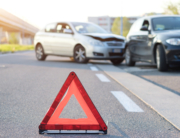The National Highway Traffic Safety Administration (NHTSA) estimates that drowsy driving caused approximately 846 deaths in 2014. The NHTSA’s 2017 report, Asleep At The Wheel, offers further background on the problem and solutions they are working on to reduce drowsy driving accidents.
Despite these numbers, many people are still unaware of how dangerous drowsy driving can be. The National Sleep Foundation (NSF) has declared the week of November 5-12, 2017 to be Drowsy Driving Prevention Week to increase awareness of this problem. During this week, the NSF will provide public education on the dangers of drowsy driving and new ideas on how to improve road safety.
Why Is Drowsy Driving So Dangerous?
When a person does not get the sleep they need, they are not able to fully focus on the road and may even fall asleep behind the wheel. Studies have shown that sleepy drivers may put themselves and others at risk due to:
- Slower reaction times
- Difficulty focusing on the road
- Poor judgment
- Missing traffic signals or signs
- Drifting from their lane or weaving in and out of lanes when they start dozing off
- Aggressive behavior (e.g. tailgating)
Who is Most Likely to Drive Drowsy?
In general, studies have found that many people are not getting the sleep they need. Some people have a million things on their plate and are too busy to spend 7 to 9 hours a night sleeping. Some people may suffer from sleep disorders that make it difficult for them to get the rest they need; when these issues are left untreated, people become sleep deprived and are more likely to engage in drowsy driving.
The following groups of people may be more likely to experience sleep deprivation and, therefore, are more likely to drive while drowsy:
- People between the ages 18 and 29
- Commercial truck drivers
- Bus drivers
- People on medication with side effects of drowsiness
- People who work long shifts
- People who work nights
- Drivers with sleep apnea or other sleep disorders
How Can I Avoid Drowsy Driving?
Drivers should follow these tips to avoid a drowsy driving accident:
- Get 7-9 hours of sleep before hitting the road.
- If you have not slept for 24 hours or more, do not drive.
- Be aware of signs of sleepiness (e.g. yawning, difficulty keeping eyes open, wandering thoughts) and pull over if you notice any of these signs.
- Have a caffeinated drink before a long road trip.
- Take breaks every two hours or every 100 miles traveled.
- Travel during times you are normally awake.
- Find safe places to take naps along the way.
Drowsy driving can be just as dangerous as driving drunk or driving while distracted. If you are involved in an accident involving a drowsy driver, the attorneys at the Montero Law Center will help prove the other driver’s fatigue caused or contributed to your accident.
 English
English  Español
Español 




